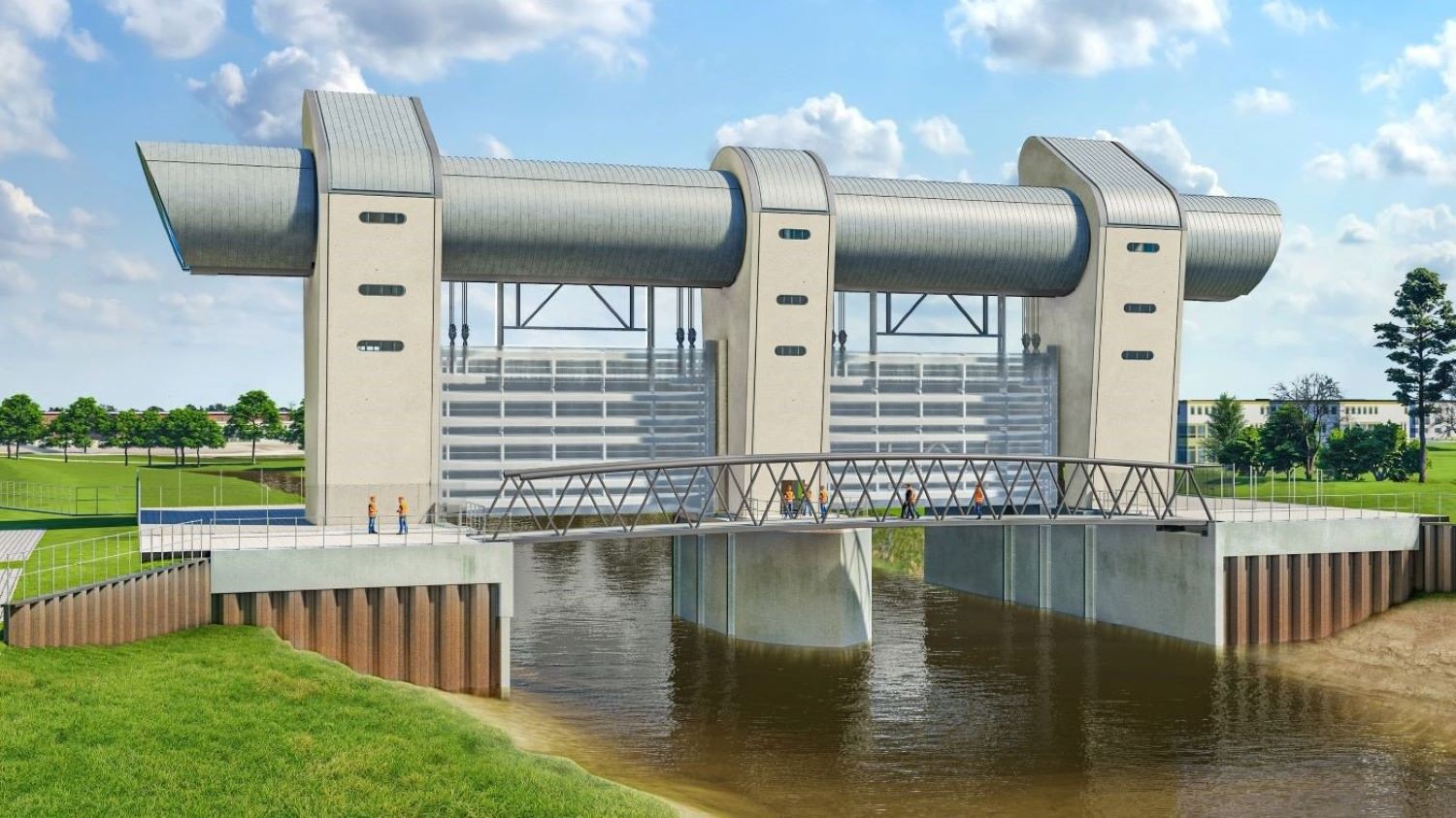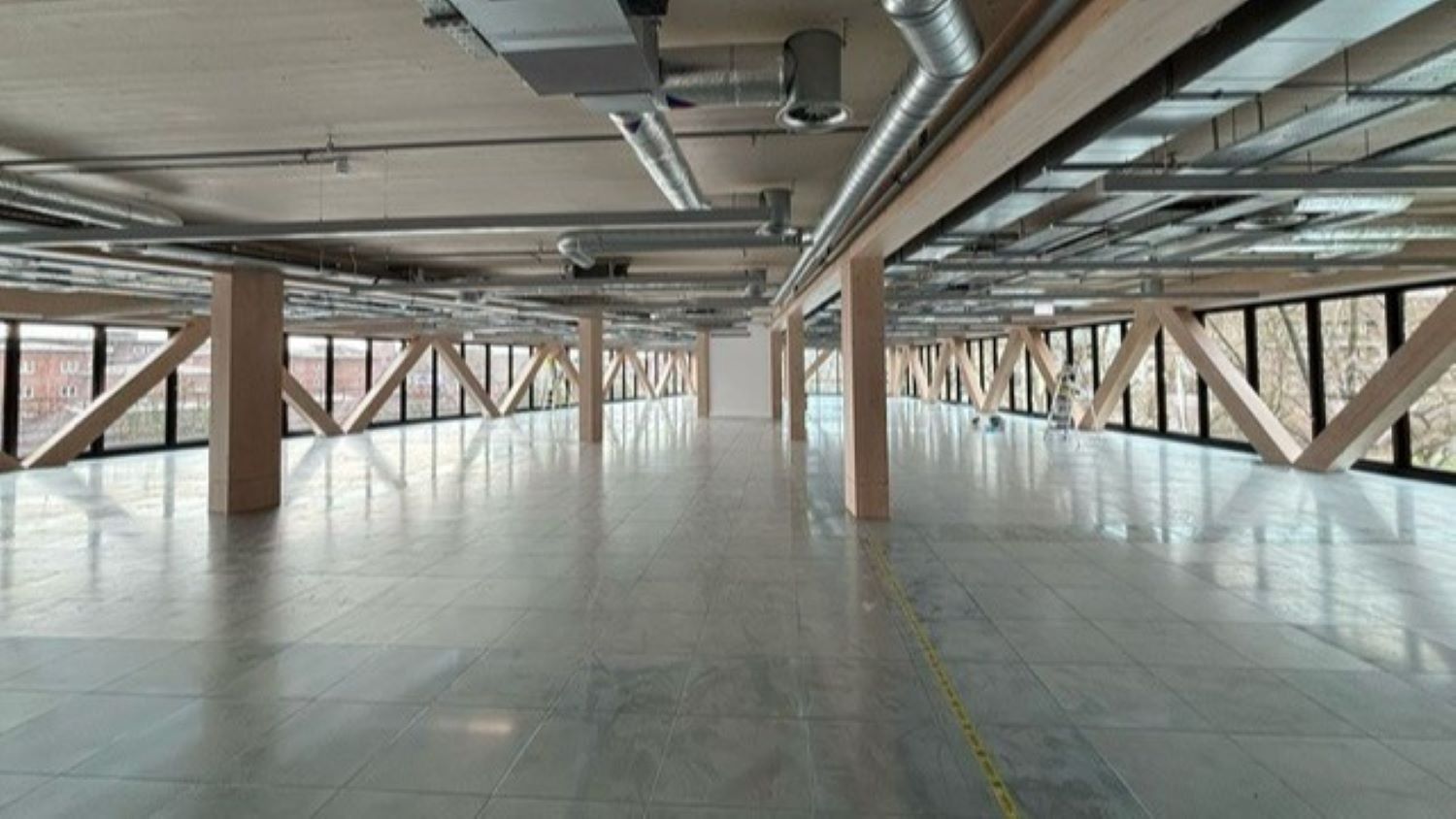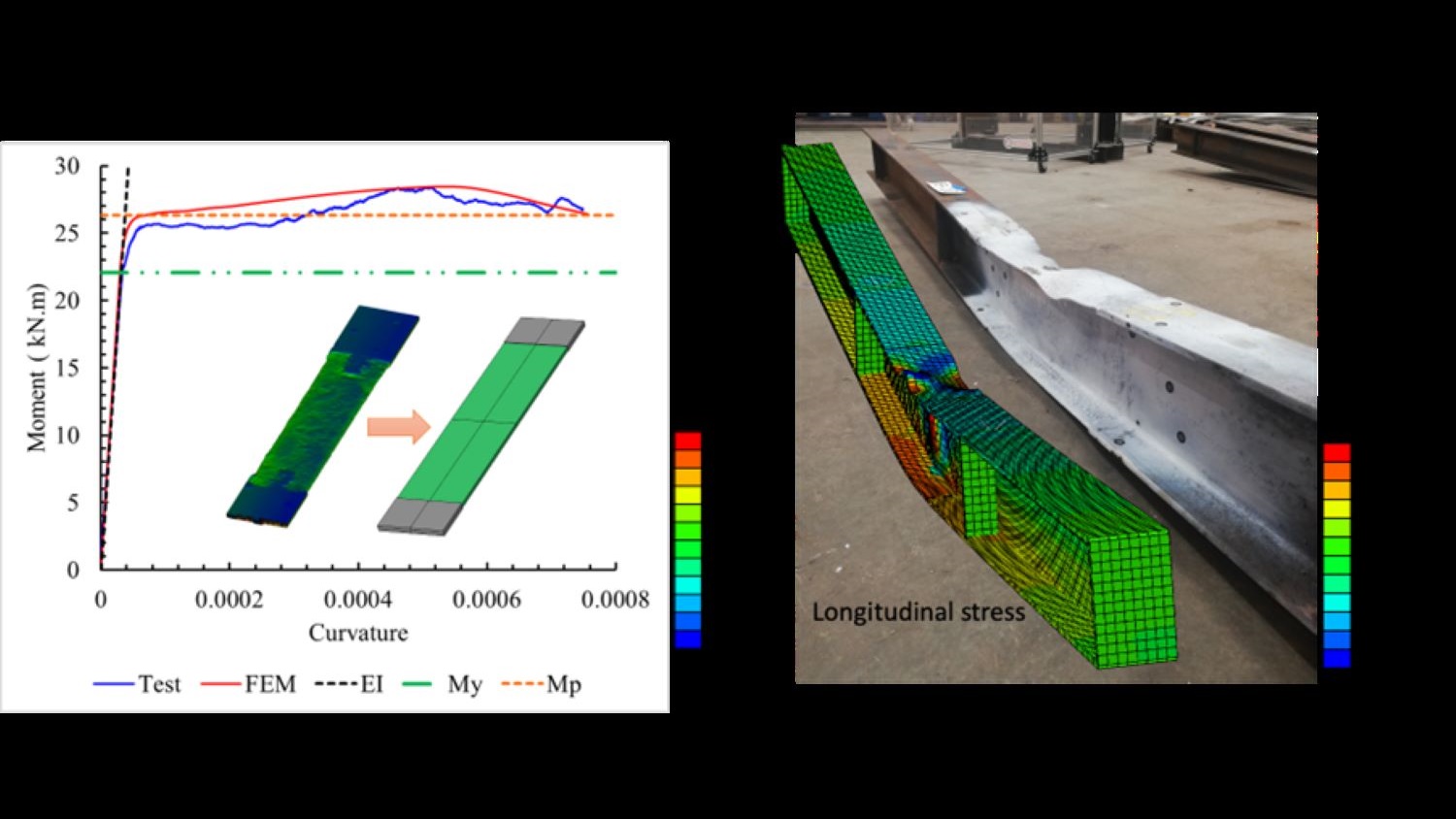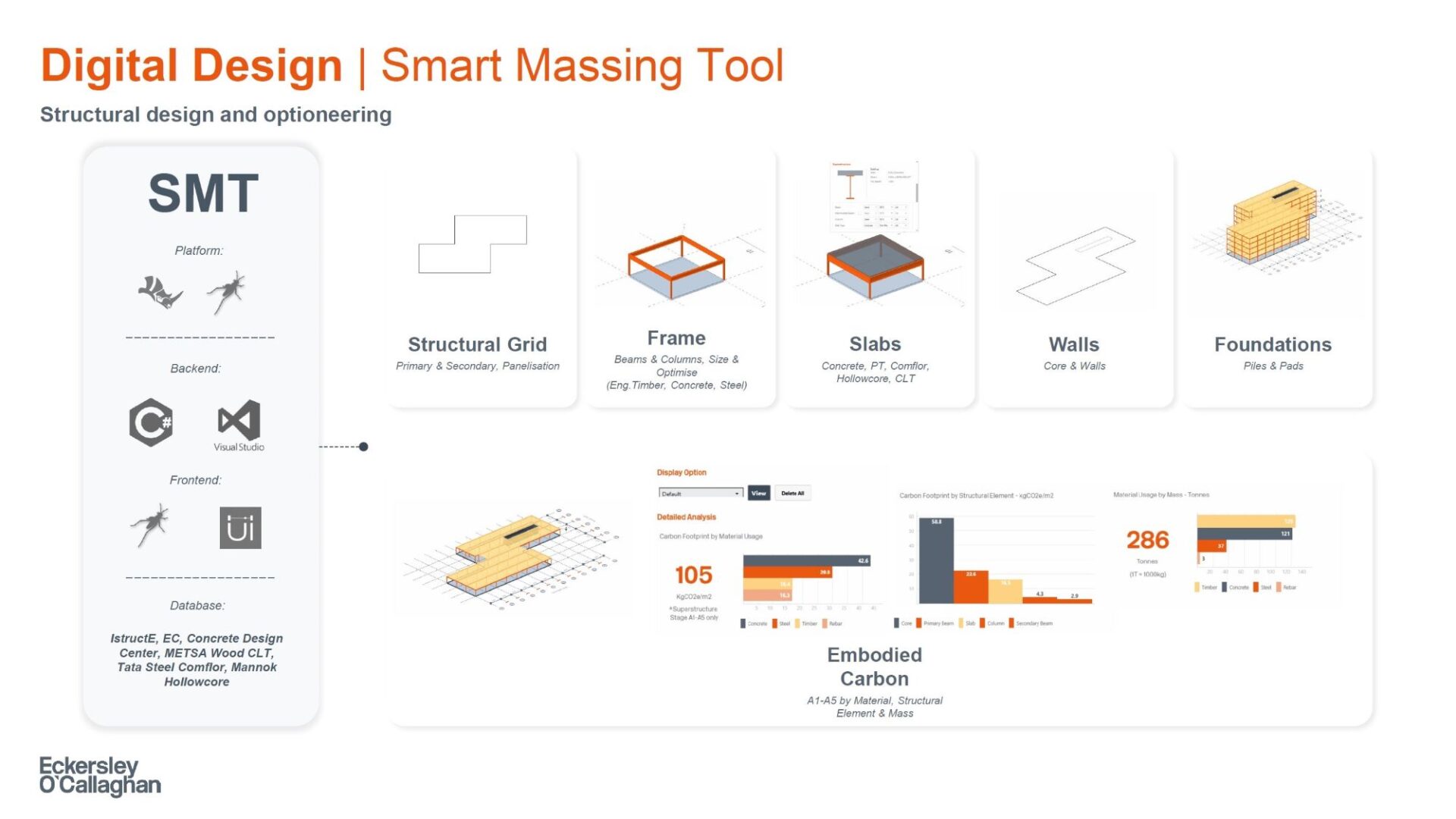The Digital Construction Awards attracted 170-plus entries this year, 85 of which have been shortlisted. Here, we detail the finalists for the Delivering Sustainability with Digital Innovation award.
This category recognises those organisations whose vision is an industry that places great importance on carbon efficiency: that continuously measures and manages carbon through all project stages, basing project decisions on CO2e emissions, not just cost and time.
The five shortlisted entries showcase how digital tools, methods and skills are improving the performance of projects and leading to lower emissions.
Baytree Nuneaton Digital Strategy | Chetwoods Architects
Baytree’s Nuneaton logistics facility is setting a new benchmark in sustainable industrial development, delivering a 25.7% whole-life carbon reduction through an integrated, digital-first approach. The challenge was to build a low-carbon logistics hub in an industry historically reliant on high-emission materials and inefficient energy use. Chetwoods and Baytree led a research-driven strategy, combining rigorous lifecycle assessments with digital tools to reduce embodied and operational carbon throughout the building’s life.
Digital innovation underpinned every phase of the project. A cloud-based common data environment (CDE), using BIM 360, centralised information, while the combination of clash detection using Dalux and AI-driven generative design reduced material waste. Timber was adopted as the main structure for the HQ building, a radical move for logistics. TwinView’s digital twin platform enabled real-time monitoring post-occupancy. Smart IoT sensors tracked air quality, energy use and temperature, feeding into a building management system that deployed AI for predictive maintenance and automated energy optimisation.
Scan2BIM and Matterport captured existing site conditions to support reuse and circularity. COBie data collection ensured that all asset information was structured for efficient handover and long-term facility management. A materials passport system and sustainability reporting ensured transparency and supported future reuse strategies.
The impact was substantial: 14,554 tonnes of CO2e saved over 30 years, comprising 7,396 tonnes in embodied carbon and 7,158 in operations. Submetering and smart tech contributed to BREEAM Outstanding and EPC A ratings. With occupier Rhenus Warehousing Solutions UK, the facility now enables clients to measure and reduce their own carbon footprints.
Scalable and replicable, Baytree Nuneaton proves that digital tools can enable the logistics sector to transition to net zero.
Bridgwater Tidal Barrier | AtkinsRéalis/Environment Agency

AtkinsRéalis has delivered a 53% reduction in embodied carbon on the Bridgwater Tidal Barrier, using a bespoke digital tool that tracks carbon in real-time during design. Commissioned by the Environment Agency (EA), the scheme protects more than 11,300 homes and 1,500 businesses from flooding until 2125. But its sustainable design also sets a new precedent for carbon-conscious infrastructure.
A key challenge in infrastructure is the limited visibility of embodied carbon during design. Traditional calculators are time-intensive and typically used after critical decisions are locked in, limiting their influence. Funded by the EA’s Net Zero Innovation Pathway, AtkinsRéalis integrated the EA’s ERIC carbon calculator into its ‘BIM Analytics – Carbon’ platform – enabling live carbon analysis directly from the BIM model.
This digital tool generates a carbon dashboard and heatmap, pinpointing high-impact design elements. Designers could iteratively refine their choices, with immediate feedback on carbon consequences. One major change involved switching from steel-cased reinforced concrete piles to driven steel tubes for the barrier foundations, reducing carbon by more than 25% in that element alone. Other optimisations included a precast solution for the barrier towers and a revised reinforced concrete apron slab.
Overall, the team were able to reduce embodied carbon for the tidal barrier by 53% against the baseline, with a 70% reduction in the impact of carbon critical elements. The tool is now being rolled out on other EA projects.
This approach not only achieved substantial emissions reductions during early-stage design, but also offers a scalable digital solution for future low-carbon infrastructure projects across the UK.
Project Costa, Old Paradise Street | SustainIQ/Gilbert-Ash

In a bid to transform carbon tracking in construction, Gilbert-Ash partnered with SustainIQ to deploy an innovative embodied carbon calculator on the Costa Coffee Old Paradise Street project in Lambeth, London. The tool directly addresses one of the sector’s most pressing challenges: real-time, product-level visibility of embodied carbon during procurement and material selection – a key barrier to meeting the UK’s net-zero targets.
The built environment contributes nearly 40% of global carbon emissions, but traditional estimation methods are often imprecise, relying on assumptions and post-design assessments. Gilbert-Ash’s solution integrates with BIM and Revit software and automates calculations using Environmental Product Declarations (EPDs) from databases such as Eco Portal. It supports uploads of bills of quantities, providing seamless data integration.
During construction, the tool delivered measurable impact. Against an expected A1-A3 embodied carbon figure of 2,373 tonnes CO2e, actual emissions came in at 2,101 tonnes – a reduction of 11.5%. This was achieved through low-carbon material choices, informed by live carbon data during procurement. The system also tracks Scope 1, 2 and 3 emissions, offering full lifecycle visibility via the SustainIQ dashboard.
The tool’s analytics capabilities allow teams to benchmark carbon data by product type, identify hotspots and make adjustments in real-time. It is now being piloted as part of the UK Net Zero Carbon Building Standard, highlighting its potential to drive industry-wide change.
Gilbert-Ash’s approach sets a replicable benchmark for sustainable, data-driven construction.
RESTOR: Reuse of structural steel in construction | Chetwoods Architects/University of Cambridge/University of Birmingham

Only 15% of the UK’s structural steel is currently reused, with the remainder recycled at high energy cost – contributing to steel’s position as one of the largest industrial carbon emitters. The RESTOR project, led by the University of Birmingham and the University of Cambridge, with Chetwoods Architects acting as sector adviser, set out to embed circular economy principles into the construction industry by addressing barriers to largescale steel reuse.
RESTOR integrates non-destructive testing, machine learning and BIM into a web-based generative design tool. This tool enables engineers to assess used steel members, predict their performance and embed them into new projects from the outset. Scanning and 3D modelling generate digital twins of steel elements, allowing precise structural evaluations and configuration into new building designs.
The parametric interface serves as a dynamic warehouse, linking existing steel members to viable structural roles in new designs. The tool’s machine learning engine streamlines this matchmaking process by optimising reuse scenarios based on steel properties, geometry and project requirements.
Used on live projects with architects Chetwoods and supplier Cleveland Steel, RESTOR has demonstrated the ability to raise steel reuse from 15% to a projected 50%. The approach cuts embodied carbon, trims procurement costs, and aligns with UK net-zero targets.
RESTOR’s generative design tool brings together contractors, designers and suppliers in real-time, embedding reuse into the design process and proving circular construction can be both scalable and economically viable.
Smart Massing Tool | Eckersley O’Callaghan

Structural design has long lacked the tools to effectively embed embodied carbon considerations at concept stage. To address this, engineers at Eckersley O’Callaghan developed the Smart Massing Tool (SMT), an intuitive digital solution integrating real-time carbon tracking into early-stage workflows.
Developed in Rhino and Grasshopper, SMT enables engineers to model floorplates, structural grids and materials while receiving instant feedback on embodied carbon. This allows for rapid optioneering – testing structural typologies and material combinations such as reinforced concrete, steel and mass timber – without delaying progress. SMT draws on verified embodied carbon data and can benchmark results against the EOC CO2 Revit tool for A1-A5 assessments.
Unlike traditional carbon tools, which are time-intensive and siloed, SMT integrates with BIM platforms such as Autodesk Revit via Rhino.Inside. This interoperability ensures sustainability insights remain consistent from concept through to practical completion.
In one recent mid-rise commercial project, SMT was used to compare core materials. Switching from reinforced concrete to mass timber achieved a 25% reduction in superstructure embodied carbon. This real-time capability enabled the team to make informed design choices far earlier than standard post-design assessments would allow.
SMT also improves collaboration by making carbon data accessible to engineers, architects and stakeholders. By visualising emissions data live within the modelling environment, it empowers teams to prioritise sustainability without external consultancy delays.
Scalable across sectors – from offices to housing – the tool marks a shift in how engineers approach low-carbon design, helping the industry meet RIBA 2030 and LETI targets through faster, smarter, greener decisions.
The winners will be revealed at the gala dinner on 1 July at the Brewery in London.
The Digital Construction Awards are organised by Digital Construction Week, Construction Management and the Chartered Institute of Building. The first sponsor to be announced is Bluebeam.
Generative artificial intelligence was used to help with the creation of this article. All content in the article was sourced, checked and verified by our editorial team before publication.
View the original article and our Inspiration here


Leave a Reply